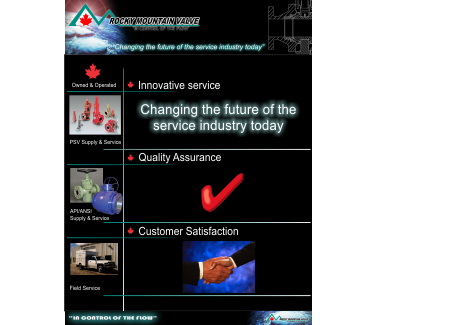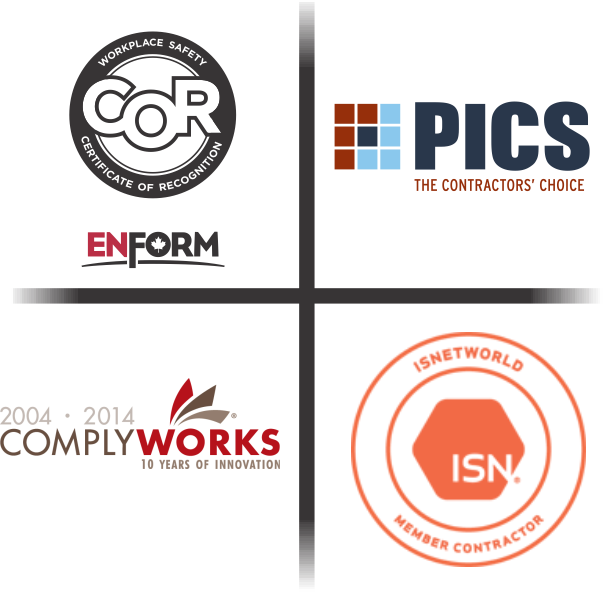API/ANSI Shop Services
Rocky Mountain Valve Service's API/ANSI Repair facilities are second to none. Wherever you need us, whenever you need us, Rocky Mountain Valve is there for you. With access to OEM and aftermarket resources. Service locations Alberta Wide. Highly trained technicians. And technology solutions that deliver new levels of efficiency and cost savings, Rocky Mountain Valve is there when you need them.
Services offered
Teardown, Inspection of critical and non-critical parts, Documented Inspection, Repair or replacement of parts to OEM standards, ESD Mounting, Wellhead assembly, Drifting, Hydrostatic testing (Charting is available), Final Documentation
Initial Inspection
The initial inspection process tells us a lot about your valve. First and foremost it will tell us if there are any external leaks due to physical damage or corrosion. The condition of the inlet and outlet can help us determine if a improper installation has occurred causing physical damage to the inlet or outlet. The initial inspection also tells us if the proper valve was selected based on the service requirements supplied by the end user.
Dis-assembly
Only trained technicians can disassemble API/ANSI valves. Improper dis-assembly can cause internal damage to critical components of the valve causing additional repairs to be performed to bring your valve back to manufacturers specifications.
Component Critical Inspection
Each part will receive a visual examination for signs of wear and corrosion. Parts that show signs of excessive corrosion or wear will be replaced with genuine O.E.M supplied parts if available. All parts will be thoroughly cleaned with an appropriate method as to not damage the components. Particular attention will be paid to sealing areas. These surfaces should be free of corrosion or signs of pitting. Stems will be examined to determine if they are straight. Pocket areas(areas fr seats, stems, trunnions) will be examined to ensure there is no foreign matter that could restrict the valve's function. All threads will be examined to make sure there is no damage that will interfere with assembly or operation of the valve. Flange facings will be examined for signs of damage that would inhibit proper sealing. Gaskets and soft goods, such as O ring seals will always be replaced if available.
Reconditioning/Replacement Of Parts
After each part has been inspected any deficiencies found will be recorded on the inspection report and it will be determined if the part can be repaired or requires replacement. To ensure proper valve performance, all components will be reconditioned within the original manufactures specifications and applicable codes and standards. All gaskets and soft goods such as o-rings will be replaced with O.E.M or equivalent materials to ensure proper operation of the valve.
Machining
Machining is an integral step in maintaining O.E.M operational specifications. Machining occurs when critical and non-critical parts require major reconditioning due to excessive corrosion or excessive damage due to operational system failure. Machining parts can not only ensure the proper operation of your equipment but can save money and time. Unfortunately machining can only be done so many times before critical components do not fall under the original O.E.M specifications and at this time they will require replacement.
Assembly
Only trained technicians can reassemble a API/ANSI valve. Improper reassembly can cause damage to critical components of the valve causing additional repairs to be performed to bring your valve back to manufacturers specifications.
Testing & Re-certification
Testing and Re-certification can only be done by a trained technician. All testing will be done in accordance with all applicable codes and manufacturer requirements. All test information is recorded on the inspection report for future reference.
Final Inspection
Once your valve is complete, RMV will complete all documentation, paint and tag your valve in accordance with applicable codes and your specifications. RMV will strap your valve on a pallet or secure it in a container to ensure that it is shipped in a secure position to prevent any unnecessary damage due to improper handling.


